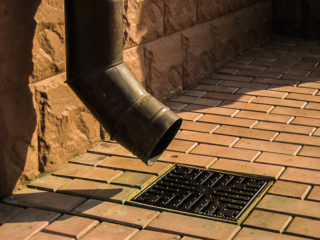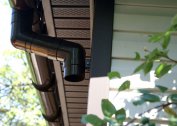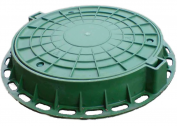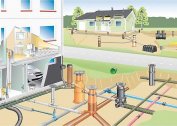Storm sewage is necessary to protect the roof and foundation of the house, pavement and homestead. If you know the basic rules for installing a drainage system, you can independently make a storm in the area. Conventionally, it includes three stages: catchment, water disposal and disposal.
Actual requirements for the installation of storm sewers in a private house
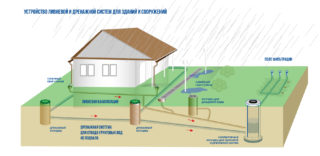 Gosstroy of the Russian Federation developed the rules and regulations for the construction of internal and external sewage systems. Do not neglect SNiP and do eye storming, as in the future this will lead to additional material costs. Storm sewage is designed to collect melt and rain water, which takes human waste from the surface of the soil. If you violate the rules for the disposal of such effluents, the sanitary and epidemiological condition of the area may deteriorate.
Gosstroy of the Russian Federation developed the rules and regulations for the construction of internal and external sewage systems. Do not neglect SNiP and do eye storming, as in the future this will lead to additional material costs. Storm sewage is designed to collect melt and rain water, which takes human waste from the surface of the soil. If you violate the rules for the disposal of such effluents, the sanitary and epidemiological condition of the area may deteriorate.
The principle of operation of the stormwater drain is based on gravity flow, therefore, all its elements - gutters of gutters, storm water inlets, pipelines - are installed with a slope towards the sewer wells.
SNiP take into account the slope and depth of the pipes, the material for their manufacture, the nature of the soil and the depth of freezing. For the middle strip, laying of pipes with a diameter of 50 mm is allowed at a depth of 0.3 m; with a large cross section - 0.7 m.
If there is evidence of severe freezing of the soil, the depth of the pipeline increases to prevent the formation of ice plugs, which will inevitably lead to damage to the stormwater system.
For pipes of different diameters SNiP provide for the corresponding slopes.
Types and device of storm sewer
According to the device, storm sewage is divided into three types:
- Separate system in which storm drains and wastewater drains have a different disposal system.
- Semi-separate network - separate drainage system, but sewer wells are common.
- The system of the general alloy of storm water and ZhBO has the general pipeline of dumping polluted water.
The rainwater collection point system consists of storm water inlets through which water enters the pipes. To avoid storm blockage, the grooves and trays are covered with trellises that trap tree branches and debris from above. Sometimes before entering the drainage system, sand traps are installed.
The city network has a branched system, covering pipelines and wells, through which water is routed to city sewers. The final stage is the treatment plant, after which the clarified water is discharged into reservoirs or soil. Pipes are located at different depths with a slope towards the sewer wells with a diameter of at least 1 m. Such a drainage system is called linear. If the terrain does not allow it to be run downhill, install transfer pumps.
The linear scheme of the storm is more complicated than the point one; it serves to collect water from the roof of the building, door pallets and channel systems in the adjacent area. The outdoor storm sewer, which is located along the paths, consists of rain trays with grates. Its advantages include:
- easy cleaning from blockages;
- simple repair to replace storm water inlets;
- simplicity of design.
The internal system requires a thorough approach with the calculation of the necessary volume of the pipeline to collect any amount of precipitation. It involves digging trenches, laying pipes, installing inspection wells.
Design and implementation of necessary calculations
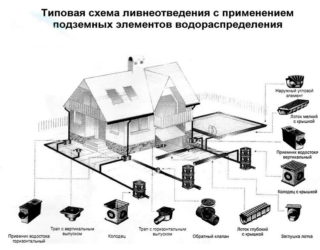 Design begins with collecting data on the amount of precipitation falling in the construction area. They can be taken:
Design begins with collecting data on the amount of precipitation falling in the construction area. They can be taken:
- at a weather station;
- in SNiP;
- in the building company.
Stages of designing a storm sewer gasket:
- The type of soil and its corresponding throughput are determined.
- The scheme of the storm is compiled taking into account the relief of the site and the availability of communications in the area.
- The depth of soil water is taken into account.
- The plan indicates the place of admission.
- The runoff area is determined. It is the sum of the waterproof surfaces in the selected area, including the roof of the building, asphalt and concrete tracks.
The theoretical volume for collecting rainwater is calculated taking into account correction factors and data on the amount of precipitation. If the calculation is erroneous, this can lead in one case to overloading the system, and in another - to the cost of the project. Experts advise making a five-fold margin in terms of rainfall throughput (based on the average rainfall). For better drainage, pipes are installed at an angle of 4-5 degrees, although with a slope of 1.5 cm, a clean drainage system works quite well.
Material selection
The material for pipes, gutters and inlet trays is selected taking into account operating conditions and design load. The task of stormwater in ensuring the integrity and durability of the structure.
Criterias of choice:
- strength - when underground laying pipes will experience pressure not only from the inside, but also from the outside;
- elasticity to withstand shock loads;
- resistance to ultraviolet radiation;
- ability to withstand temperature changes;
- resistance to aggressive compounds.
For the device of external sewage, cast-iron and polymer pipes are used, for inspection wells - reinforced concrete products with a large cross-section. Cast iron pipes are strong and durable, but do not tolerate shock loads. Difficulties arise during their installation and the search for fittings of suitable configurations.
Polymer pipes have several advantages:
- strength;
- light weight;
- large assortment of fittings;
- affordable price;
- smooth inner surface with water repellent properties.
Large-sized reinforced concrete pipes are very strong and durable, but have limited use.
Installation Steps
 Before the construction of storm sewers around the house, a drainage system of the site is carried out, since its depth is lower than that of the storm water pipe system.
Before the construction of storm sewers around the house, a drainage system of the site is carried out, since its depth is lower than that of the storm water pipe system.
To lay the shower choose a secluded place on the site. According to the compiled scheme, three routes are planned that have their pipes and inspection wells:
- collecting water from the roof of the structure;
- withdrawal from the site;
- removal from a paving.
Installation of tracks is carried out sequentially according to the algorithm:
- A trench is excavated with a slope of 2-3 cm per linear meter.
- A 20 cm cushion of sand or gravel is poured under the pipeline.
- Pipes are laid under the established slope to the inspection well.
- Audits are arranged every 10 m and at each corner of the storm.
- In open places, overflow pipes are installed.
- Tests are carried out on the operability and tightness of the storm sewer system.
Turns, connections are made using fittings of the appropriate configurations. Pipeline filling is done in two stages: first, soil is ground and rammed to make the load uniform, then backfill is continued to the soil surface.
For each branch, the amount of discharged water is calculated based on the diameter of the cross section, on which the throughput depends, and the area served. This approach will allow you to properly balance the stormwater system.
Installation cost
To determine the estimated cost of installation work, the number of storm water inlets, the length of the tracks are calculated.Excluding earthworks and a length of at least 50 m, the price for the installation of stormwater will be from 1190 rubles. per linear meter. This price includes the installation of 4 inspection wells, materials and work.
Installation of 1 rain water inlet tray will cost 1,000 rubles. The same installation on cement mortar will cost 1,500 rubles. For the installation of a storm pipeline with sprinkling require 200 rubles. per linear meter.
The cost of installing the drainage system will be affected by the depth of the pipeline, a layer of granite crushed stone for sprinkling, the use of pipes with a geotextile winding, and pipe material. Laying at a depth of 1 m to 2.5 m varies from 2000 to 4500 rubles. per linear meter.
The cost of a viewing sewer well from a plastic pipe with a diameter of 315 mm and a depth of 3 m will cost 9000 rubles, with a depth of 1 m - 6500 rubles.
